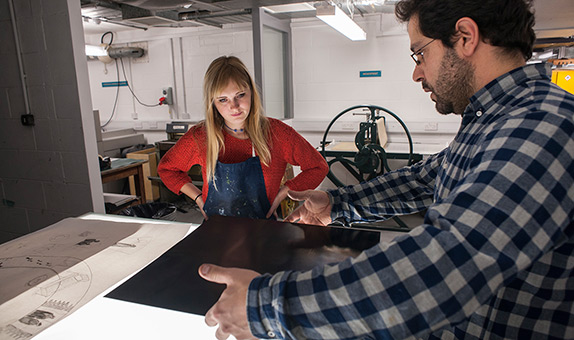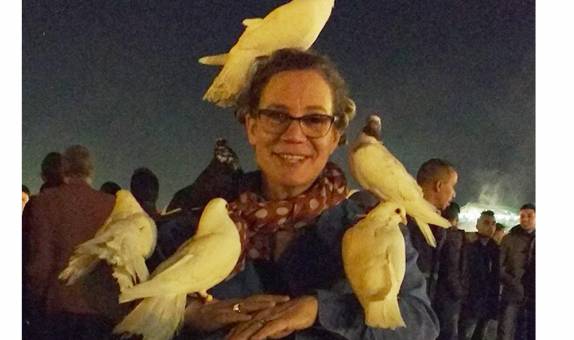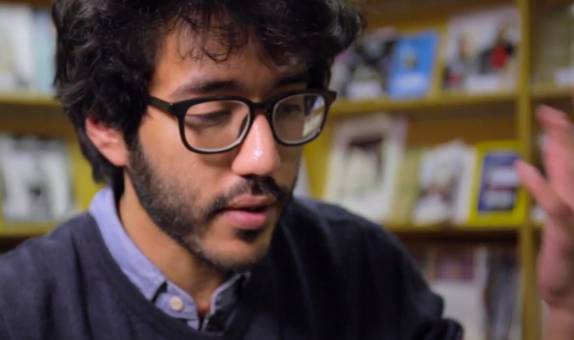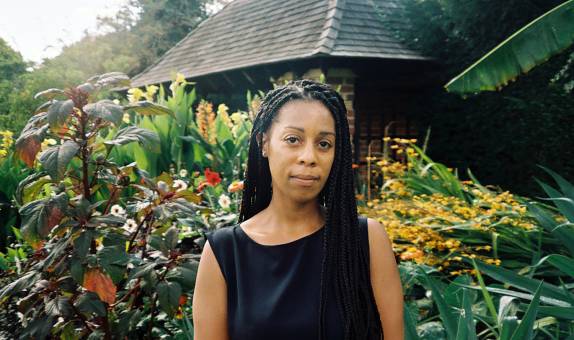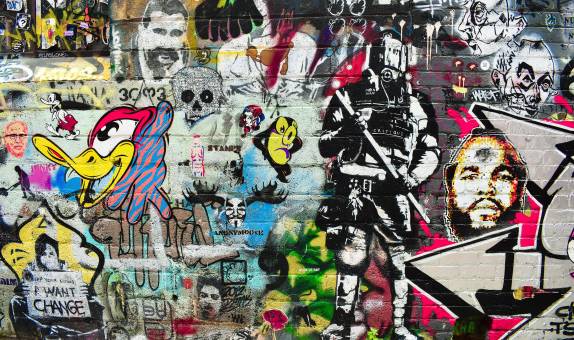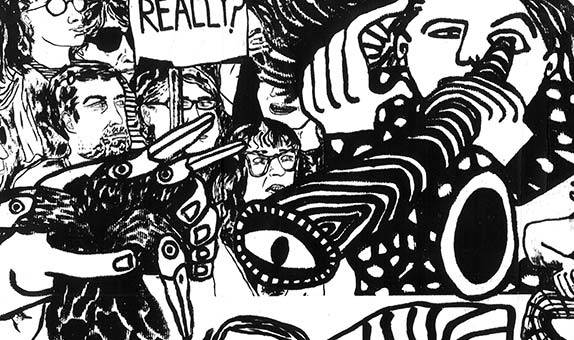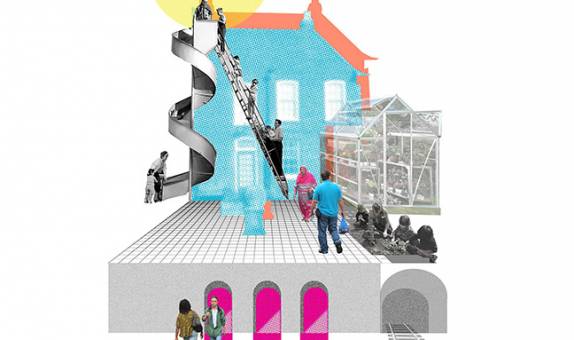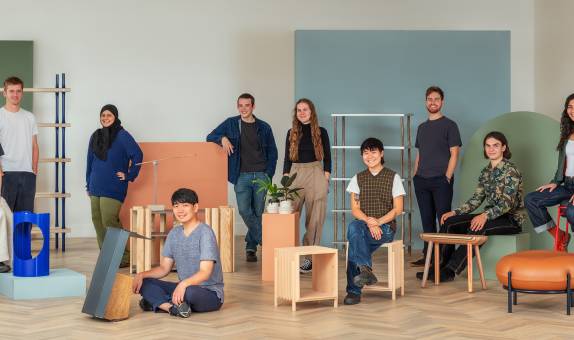Graphic Design BA (Hons)
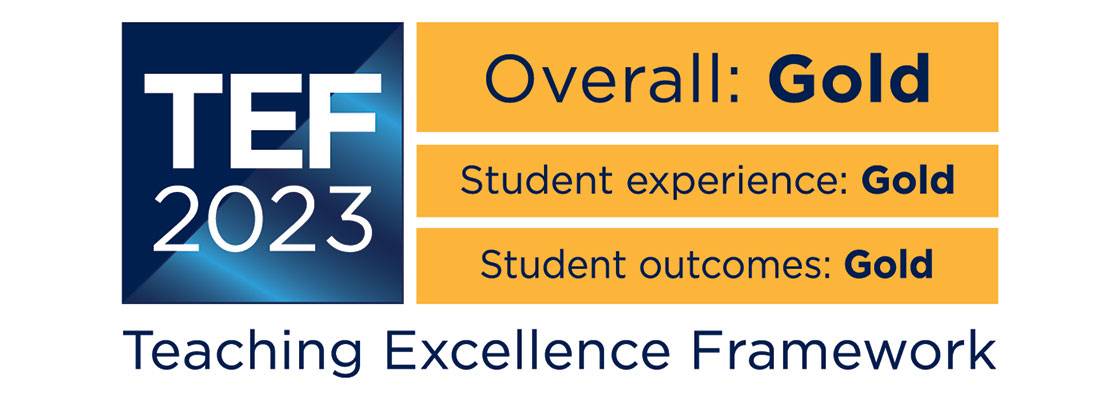
Teaching Excellence Framework (TEF) Gold award
Our commitment to high quality teaching has been recognised with a TEF Gold rating. The University has received an overall rating of Gold, as well as securing a Gold award in the framework's two new student experience and student outcomes categories.
Why choose this course?
No. 1 in London and Top 5 in the UK for Graphic Design* in the Guardian University Guide 2025 (*covers Graphic Design and Illustration Animation).
Our Graphic Design students have won more than 50 international competitions in the last four years including RSA, Creative Conscience Awards, ISTD and D&AD. This reflects the quality of work from this practice-based course.
On this course you'll be encouraged to be innovative, invent and inspire change. In addition to learning core design and research skills, you'll work on live projects throughout the course: recent collaborations have included RSA, D&AD, Creative Review, The Science Museum, Amnesty International, Croydon Council, The British Film Institute and Save the Children.
You'll be encouraged to be innovative, invent and inspire change. In addition to learning core design and research skills, you'll work on live projects throughout the course: recent collaborations have included RSA, D&AD, Creative Review, The Science Museum, Amnesty International, Croydon Council, The British Film Institute and Save the Children.
You'll develop a personal practice through rigorous investigation of a range of focused projects. Design fields include photography, film and animation, typography, interaction, service design, user experience, social design, digital, book and editorial design.
At the end of the course, you'll be equipped with a combination of creative skills, cognitive processes and methodologies that will help you to shape the future for business, culture and communities.
| Attendance | UCAS code | Year of entry |
|---|---|---|
| 3 years full time | W210 | 2025 |
For 2025 entry, please submit your application before the UCAS deadline as this course may not be in a position to consider applications submitted after this date.
Please note: Teaching on this course may take place on more than one KU campus.
| Main Location | Kingston School of Art, Knights Park |
Reasons to choose Kingston
- We're ranked No.1 in London and Top 5 in the UK for Graphic Design (The Guardian University Guide 2025).
- Kingston School of Art students have access to all our world-class workshops and making spaces, including digital media labs, 3D workshops, printmaking, film and photography facilities.
- Our Graphic Design students have won 52 international competitions in the last five years including RSA, Creative Conscience Awards, ISTD and D&AD.
The Art School Experience
As part of Kingston School of Art, students on this course benefit from joining a creative community where collaborative working and critical practice are encouraged.
Our workshops and studios are open to all disciplines, enabling students and staff to work together, share ideas and explore multi-disciplinary making.

What you will study
The Graphic Design course has an applied approach to the expanding field of graphic design: you'll use our studios and facilities to experiment, exploring new ways to push the boundaries of visual communication.
You'll have plenty of opportunities to participate in live projects and work with the broader design industry: collaboration, teamwork and cross-disciplinary projects are strongly encouraged to reflect professional practice.
The course hosts regular visits to studios, events and conferences both within the UK and further afield.
Modules
Year 1
Year 2
Optional year
Final year
Year 1 encourages an open-minded and exploratory approach to understanding design. You'll work on individual and team projects, to develop your knowledge of the design process, visual language, typographic principles and core skills.
Core modules
Concept and Challenge
30 credits
This module focuses on the generation of concepts and ideas. The aim of the module is to develop conceptual ability and creative confidence in responding to a range of design and communication challenges. It introduces you to different ways of thinking and generating ideas, with emphasis on currency, appropriateness and dynamism of approach and solution. Project briefs encourage you to expand your knowledge and experiences, challenge assumptions, subvert norms and learn about the role of risk within the creative process.
Visual Vocabularies
30 credits
The aim of this module is to introduce you to the fundamental principles and components of graphic design and visual communication, through a range of projects, workshops, experiments and exercises that explore the relationship between materials, methods, messages and meaning. Key areas include typography and layout, hierarchy and composition, visual thinking and visual language, process and production techniques and context. The emphasis in this module is on developing core competencies that underpin graphic design practice.
Communication and Context
30 credits
The aim of this module is to introduce you to how the designer can engage, interact with and respond to different contexts and varied audiences. These include the personal and professional, geographical and environmental, social and political, commercial and educational, local and global. The emphasis in this module is on developing experience and understanding of how design and communication function in the wider world.
Image & Text - Communication Design History for Graphic Design
30 credits
The module is an introduction to the history and critical study of graphic design. It will provide students with an understanding of the historical development of graphic design within the larger field of cultural production, and an awareness of core debates and concepts in the history of art and design.
Through a series of thematic sessions, students will reflect on what might be key stages in the history of graphic design; unpack the images, objects, and processes of graphic design and the different ways in which they mean; and engage with the ideas and practices that have shaped graphic design as a social, cultural, and economic activity.
Through discussion, students will develop an understanding of the key themes and critical issues that inform contemporary design practices. They will be able to examine the relationship between theory and practice in graphic design and start developing their skills as independent researchers and reflective practitioners.
Year 2 helps you develop creative and interpersonal skills, used to explore imaginative ways to communicate. You'll develop a particular area of graphic design through self-initiated projects, complementing your studio work. You'll learn about the wide social and cultural context in which graphic designers work, and will collaborate with students from other courses on projects. You'll also gain useful career management skills and will have the opportunity to study abroad or undertake a work placement.
Core modules
Process and Purpose
30 credits
The emphasis in this module is on exploring and understanding the design process, with particular focus on the relationship between research, development and the successful realisation of ideas. The module introduces you to a range of methodologies including design thinking, prototyping and iteration and through varied briefs, workshops and project work, examines how these methods inform design process and effective solutions. Projects are designed to extend design vocabularies and knowledge of materials and visual languages (including typography, photography and moving image) as vehicles for communication and to hone analytical and critical evaluation skills in the resolution and realisation of ideas.
Design Interactions and Innovations
30 credits
The aim of the module is to explore different modes of communication and dissemination. The focus is on the interactive nature of graphic design and visual communications, with emphasis on the way in which designers engage audiences and participators in their practice. The projects in this module encourage you to experiment, embrace risk and develop innovative approaches and solutions. They will introduce you to strategies for extended research and collaboration and develop interpersonal and communication skills. The module requires you to consider how your ideas can be meaningfully applied in appropriate contexts and to relevant audiences. It includes opportunities for you to develop interdisciplinary projects and explore the possibilities of participatory practice.
Design Directions
30 credits
The aim of this module is to develop understanding of the role of the designer and enable you to contextualise your personal design vision and ambition. This includes developing understanding of how to present work in a dynamic and appropriate manner and equipping you with the ability to develop and express opinions and adopt different perspectives in relation to a range of issues and contexts (social, commercial, cultural, environmental and political). The emphasis in this module is on developing knowledge, awareness and a growing confidence in articulating ideas verbally and visually and includes the design of a positioning portfolio in preparation for Level 6.
Critical Issues in Graphic Design: Research and Practice
30 credits
This module builds on the historical and thematic content introduced at Level 4 and emphasises the theorisation of contemporary graphic design practice. A series of lectures, seminars, workshops, tutorials, screenings and visits informs and supports your own emerging research interests and the development of independent visual and academic research skills that cross history/theory and design practice. Lectures and seminars will deepen critical and theoretical engagement with contemporary issues in graphic design. Seminar tasks and assessments are carefully designed to foreground projects that support the location of graphic design as a discipline. Research methodologies are introduced through case studies and practical activities that reflect the issues explored through the module's contemporary content.
Many of our students take advantage of the ERASMUS scheme to spend a year studying or working in Europe. We have a network of links with prestigious design institutions.
Over 100 students from the course have made use of the ERASMUS Exchange over the last four years. Graphics students on the ERASMUS programme have studied in 17 different institutions.
Over 50 students have made use of ERASMUS funding to support industrial placements. The ERAMUS programme has supported over 40 students from all over Europe studying at Kingston. The study abroad programme with links in Japan, Korea, and the US supports students studying internationally.
In your final year, you'll work from a range of briefs, and develop your own, to reflect your personal interests and career aspirations. Some students work a range of areas; others choose to specialise in one. This could be branding, social design, editorial design, film and moving image, photography, advertising and promotion, typography or interactive design. Your interests and self-directed work will inform the written element of the course.
Core modules
Design Studies
30 credits
This module is concerned with the continued exploration and refinement of techniques, themes and tools that will inform an innovative approach to idea generation and insight gathering. The module places emphasis on the completion of a significant body of creative work that strategically reflects the individual's interests, achievements and ambition at Level 6. It requires work which demonstrates diversity of content and imaginative and appropriate realisations of design-led solutions to a professional standard.
Positioning and Presenting Your Design Practice
60 credits
This module is concerned with supporting the practical and strategic development of a professional body of work that accurately reflects the consolidation of an individual's design practice endeavour at level 6. Providing the opportunity to identify personal attributes and strengths, to critically edit and select from project work, to manage, organise and refine that work as required, for effective portfolio presentation across a range of appropriate professional formats. In addition, preparation for employment or postgraduate study will be undertaken, informed by industry professional talks and seminars on relevant self-promotional techniques and approaches.
Dissertation: Research and Reflection
30 credits
Building on the links between research and practice embedded at Level 5, the Critical and Historical Studies (CHS) Dissertation: Research and Reflection module focuses on in-depth research, critical enquiry and reflection on questions and critical issues emerging in students' own practice, and pertinent to the practice of their own discipline.
Over the module, students will initiate and develop an individual research topic; identify and evaluate appropriate archives, bodies of critical literature, visual/material sources and research methods; manage their study time; engage with and respond to tutorial dialogue and peer feedback, and apply critical and analytical skills to produce a 7-8000 word written Dissertation, supported by a series of lectures, seminars and tutorials.
Future Skills
Knowledge to give you the edge
Embedded within every course curriculum and throughout the whole Kingston experience, Future Skills will play a role in shaping you to become a future-proof graduate, providing you with the skills most valued by employers such as problem-solving, digital competency, and adaptability.
As you progress through your degree, you'll learn to navigate, explore and apply these graduate skills, learning to demonstrate and articulate to employers how future skills give you the edge.
At Kingston University, we're not just keeping up with change, we're creating it.
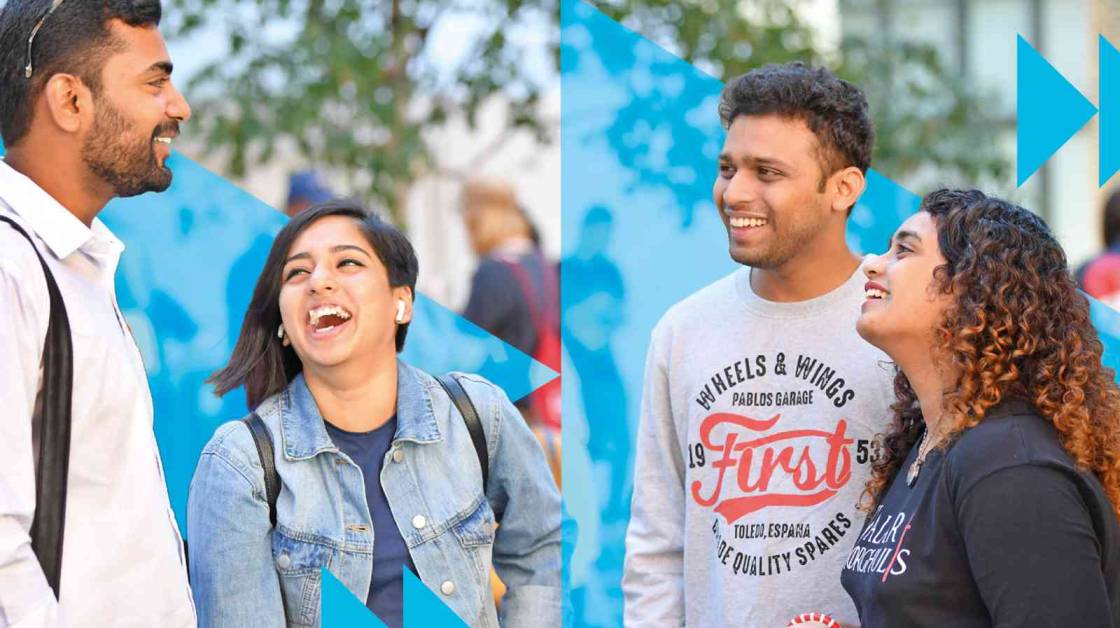
Entry requirements
Teaching and assessment
Scheduled learning and teaching on this course includes timetabled activities including lectures, seminars and small group tutorials.
It may also include critiques, project work, studio practice and performance, digital labs, workshops, and placements.
Who teaches this course?
This course is taught in the Design School, Kingston School of Art. Our staff are practising designers, researchers and academics who'll enrich your student experience with contemporary issues, events and challenges. Influential guest speakers reinforce the currency of the course, providing the latest insights into practice.
Facilities
You'll use our studio spaces and facilities to experiment and explore new ways to push the boundaries of projects and open discourse across disciplines.
Collaborative and multi-disciplinary teamwork is actively encouraged between students, across faculty courses, international institutions and with industry.
Throughout the course, you'll be encouraged to explore and develop expertise in current design approaches, techniques, media, and application including branding, editorial, interactive design, packaging and 3D design, advertising, information design, digital moving image, sustainable and experiential design.
Skills and techniques such as typography, photography, moving image, printmaking, rapid proto-typing, analysis and research, human factors, presentation, interactive and graphic software all support project work by helping realise solution-led ideas.
Course fees and funding
Additional costs
Depending on the programme of study, there may be extra costs that are not covered by tuition fees which students will need to consider when planning their studies. Tuition fees cover the cost of your teaching, assessment and operating University facilities such as the library, access to shared IT equipment and other support services. Accommodation and living costs are not included in our fees.
Where a course has additional expenses, we make every effort to highlight them. These may include optional field trips, materials (e.g. art, design, engineering), security checks such as DBS, uniforms, specialist clothing or professional memberships.
After you graduate
Our Graphic Design graduates are renowned for being autonomous, versatile, entrepreneurial visual communicators. They are employed worldwide in the fields of branding, advertising, digital moving image, typography, interactive design, packaging and 3D design, photography, information design, and sustainable and experiential design.
Exceptional achievements in international competitions (including the D&AD Awards, Creative Conscience Awards and the RSA Student Design Awards) mean that our students hold a strong reputation for innovation, creativity and commercial understanding.
Many graduates develop their own design practices, while others choose to take postgraduate courses before embarking on their careers.
Student success
Kingston School of Art's Graphic Design students have won 52 international competitions in the last four years, including:
- RSA;
- Creative Conscience Awards;
- ISTD;
- D&AD.
This reflects the quality of work from this practice based course.
Key information set
The scrolling banner(s) below display some key factual data about this course (including different course combinations or delivery modes of this course where relevant).
Course changes and regulations
The information on this page reflects the currently intended course structure and module details. To improve your student experience and the quality of your degree, we may review and change the material information of this course. Course changes explained.
Programme Specifications for the course are published ahead of each academic year.
Regulations governing this course can be found on our website.




